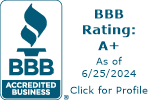I Heard the Trucks Coming Up the Hill…
Shortly after we moved from Georgia to our new home in Exeter, New Hampshire, my 16-year-old son asked me if he could burn the brush he had cut down. “Sure, honey, that’s fine,” I answered. And didn’t give it another thought, until…
The Spoiled Chicken Incident
I was babysitting for Gavin, the three-year-old neighbor, and we were busy weeding the front flower garden. It was getting close to dinner time, so we went inside to put the chicken in the oven. Market Basket had a special on chicken legs, and I had bought a ten-pound bag. As I cut open the bag, the stench escaped. Oh, my gosh!! The smell was awful. Ten pounds of spoiled chicken!
What do you do with ten pounds of rotten chicken? Oh, I’ll toss the whole thing on the fire. We walked out the back door to the roaring fire and threw the chicken on top. Then, back out to the front yard to dig in the dirt.
The Fire Trucks Arrive
It was a hot, sweaty kind of day. Barefoot and dirty, we continued to weed. Then we heard sirens, and Gavin became hysterical! He was terrified of sirens. I assured him that they weren’t coming here, and then they stopped, so he calmed down. Then I heard the powerful engines and knew they were coming up the hill. I ran into the house, caught a glimpse of myself in the mirror, and saw my dirty, sweaty face. Out the back door and onto the deck, I spotted a bucket full of water. I picked it up and yelled to David, “Throw this on the fire! The fire trucks are coming!”
I ran back into the house with a crying Gavin on my hip. And I waited. Before long, the fireman appeared at the door and asked if I knew I had a fire in my backyard. “Yes,” I replied.
“Who started the fire?” he asked.
“My son,” I answered.
“How old is he?”
“16.”
“The fire chief wants to talk to you.”
The Fire Chief’s Visit
Let me set the scene a bit more. I was barefoot, sweaty, with dirt on my face and hands, and a screaming three-year-old on my hip! Oh, and the neighbor had removed the stairs to the front porch as he was building new stairs! My license tag was still a Georgia plate. We must have looked and sounded like hillbillies to these New England guys!
The fire chief asked if I knew having a fire without a permit in Exeter was illegal.
“No,” I answered.
He then proceeded to state the various requirements for having a backyard fire. Here’s the best part of all.
“Ma’am,” he continued. “You can burn brush, or you can cook food outside, but you can’t burn brush and cook on the same fire.”
Oh my gosh! He actually thought I was cooking those chicken legs on a brush fire! How I wish that I had a bucket full of barbecue sauce and a mop and could have said,
“Here! Take this mop and go slosh those chicken legs with this here barbecue sauce!”
It was all I could do to keep from dying laughing! Those Southern hillbillies!
Later that evening, David informed me that the bucket of water he threw on the fire had a frog in it. Did the fire chief think I was cooking frog legs as well??
The Versatility of Hardware Cloth
All of this took place before I met Duncan. I met him two years later, and he loved this story! If he were cooking chicken on a brush fire, he would have put down a piece of hardware cloth to cook it on!
Hardware cloth is such a helpful product. It’s available in galvanized, vinyl-coated, and stainless steel. Check out our hardware cloth!
My warmest regards,
Debbie Page
CEO, Louis E. Page Inc – Woman-owned business and Family-owned since 1893. (True! That’s 131 years owned and run by our family.)
P.S. Hardware cloth is perfect for all your fencing and cooking needs!



.jpg?width=846&height=635&name=f40f8eee-14a9-4dbf-a1d2-5c3414175d18%20(1).jpg)






